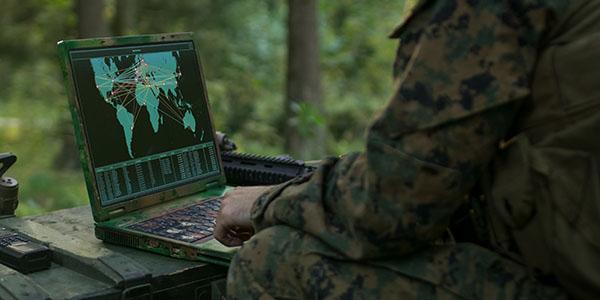Military Services Look at New Approaches to Intelligence Operations
Being forced to telework by the pandemic is a blessing in disguise to the U.S. military intelligence community, say its leaders. Processes that have been fermenting as ideas for years are being embraced enthusiastically, and what had been considered half-baked now is the way of the future as the community deals with new threats and methods of operations.
These were among the points introduced by experts in a plenary session during the second day of the AFCEA/INSA Intelligence and National Security Summit being held online September 16-18. Six intelligence heads from each of the services described how the pandemic changed an already dynamic picture that was being redrawn to suit new types of military operations.
Teleworking is something we’ve been talking about for years in the intelligence community.—Letitia Long, chair, INSA #intelsummit20
— Bob Ackerman (@rkackerman) September 17, 2020
Panel moderator Letitia Long, chair of the INSA Board of Directors, noted, “Teleworking is something we’ve been talking about for years in the intel community.” Her remark was expanded by Maj. Gen. Kate Leahy, USA, assistant deputy chief of staff, G-2, U.S. Army, who stated that the pandemic “absolutely gave us the opportunity to up our game when it comes to telework.”
Vice Adm. Jeffrey Trussler, USN, deputy chief of naval operations for information warfare, director of naval intelligence, added, “The pandemic forced us to do this [telework]. It helped us discover how far behind we were.” He and others noted that they were expanding on ideas expressed as opinions for many years, and now they were realizing the worth of telework and looking to expand it.
The pandemic forced us to do this [telework]. It helped us discover how far behind we were.—Vice Adm. Jeffrey Trussler, USN, deputy chief of naval operations for information warfare, director of naval intelligence #Intelsummit20
— Bob Ackerman (@rkackerman) September 17, 2020
Adm. Trussler did warn of threats to cybersecurity because of increased telework. “It’s going to create a lot of cyber vulnerabilities for us … to our work environment and our home environment,” he said.
Maj. Gen. Leah Lauderback, USSF, director of intelligence, surveillance and reconnaissance, S-2, U.S. Space Force, described how she transitioned from the Air Force’s Space Command to her new role in the Space Force. The pandemic hit while she was still at the Air Force, so she had to take resources into the new force while still conducting operations in the new telework environment. The intelligence mission there is particularly challenging, she said, explaining, “We will have the same as the other services, but we will have to do it lighter and leaner, because we have been directed that we will have no growth here in the Space Force.”
While the Space Force will have the same intelligence goals as the other services, it will be facing changes as the U.S. military adopts multidomain operations (MDO). Gen. Leahy said the Army will refer to intelligence in MDO as “multidomain intelligence in support of MDO.” She described how the Army is building a ground system that combines electronic warfare (EW), cyber and signals intelligence (SIGINT).
We call it multidomain intelligence in support of multidomain operations … . We are building a ground system that combines EW, cyber and SIGINT.—Maj. Gen. Kate Leahy, USA, assistant deputy chief of staff, G-2, U.S. Army #Intelsummit20
— Bob Ackerman (@rkackerman) September 17, 2020
“We’re building in machine learning and AI into that to really reduce the kill time,” she said, adding that it will be a better system that is more effective and that saves the taxpayer money.
All the service intelligence officers emphasized the worth of diversity in the workforce. They agreed that having diverse backgrounds among their personnel would help generate new perspectives in the changing threat picture.



Comments